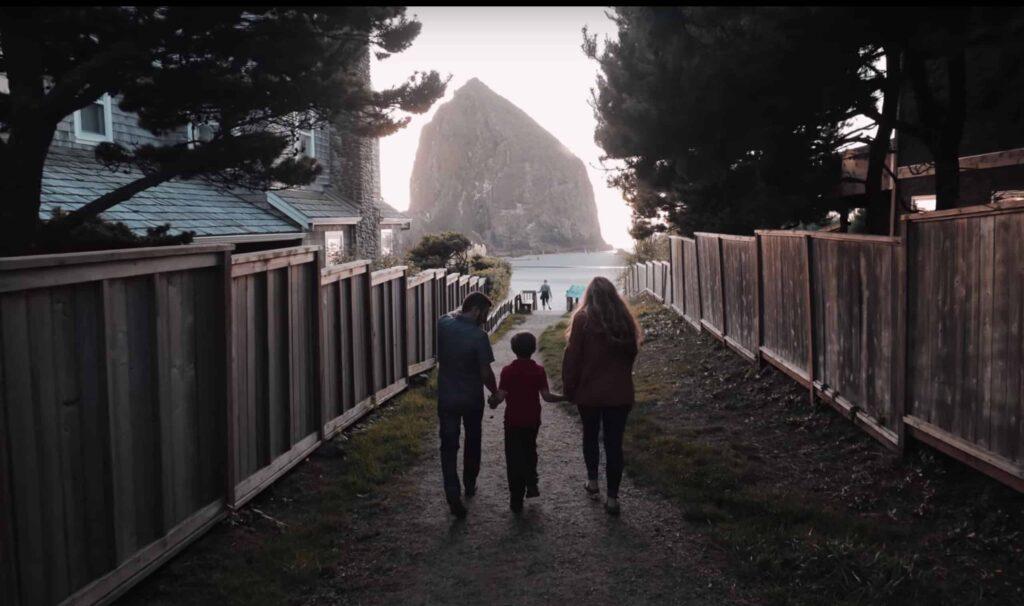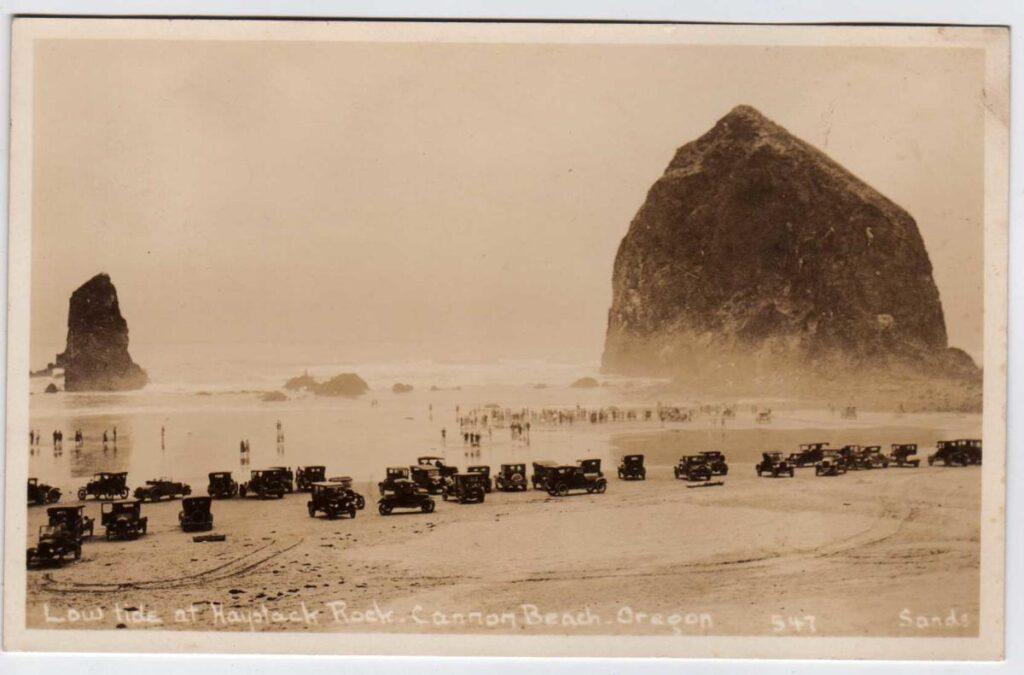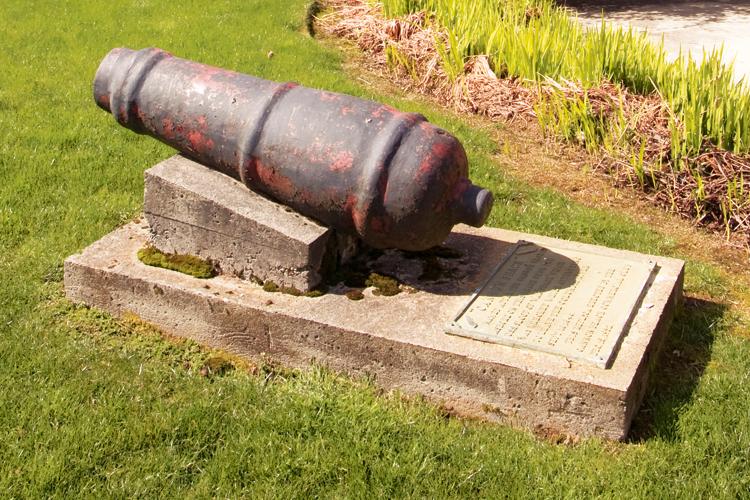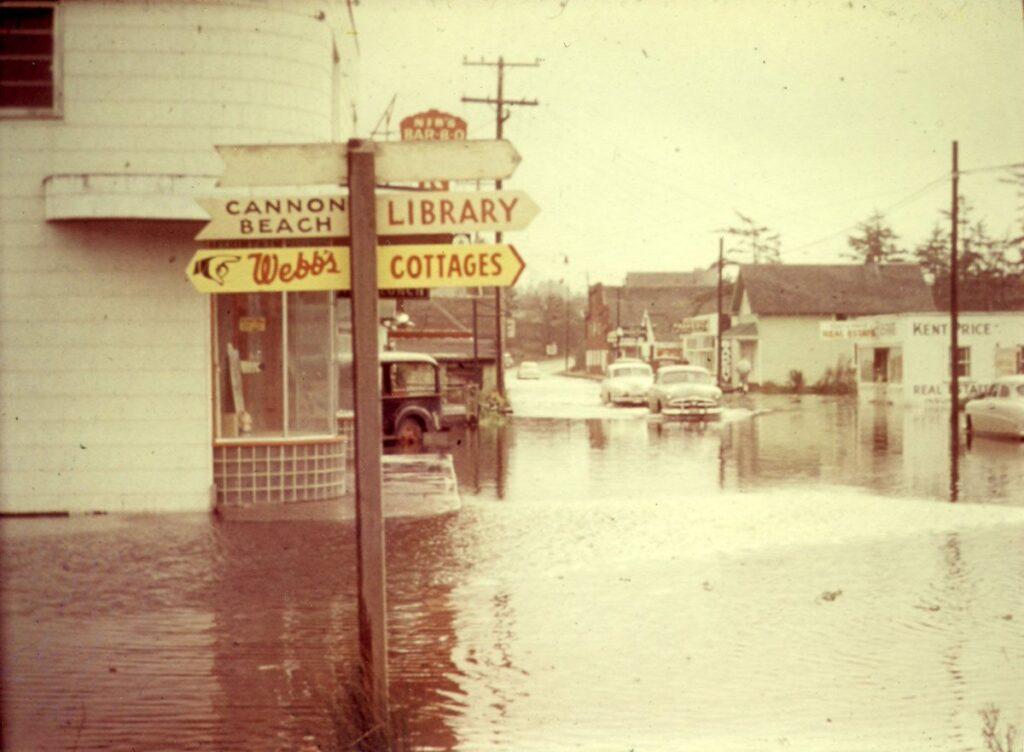The History of Cannon Beach: A Shipwreck, Whale, And Shifting Names
By Robert Matsumura, Contributing Writer

I t’s a good bet that Cannon Beach may be one of your favorite coastal destinations. After all, this charming beach community is a short scenic drive from the city, the perfect place to stroll the beach, shop, or enjoy an ice cream cone while people-watching on Main Street. Have you ever wondered though, about the origins of this cherished beach community?

Archaeological records indicate the Cannon Beach area was inhabited by early ancestors of the indigenous Tillamook people as early as the 15th century. The beginnings of Cannon Beach as we know it today, however, trace back to the 19th century and the famous expedition of Lewis & Clark. In 1806, while wintering in Fort Clatsop, near present day Astoria, the expedition learned of a beached whale to the south. A party was dispatched to investigate in hopes of acquiring blubber and oil. The party, which included Captain William Clark and Sacajawea, traveled across Tillamook Head and located the whale near the mouth of a creek which Clark named “Ecola,” the term for “whale” in the Tillamook language. Clark’s interactions with the local Tillamook people were some of the earliest on record, and his journals describe five Tillamook lodges along the creek. Clark was able to successfully barter for the needed blubber and whale oil, and to this day, a whale sculpture stands on Hemlock Street commemorating the event. Early settlers to the area later renamed the creek “Elk Creek,” and formed a community nearby with that name.

As to the name “Cannon” in Cannon Beach, the reference originates with a naval schooner, the USS Shark, which shipwrecked on the treacherous Columbia River Bar in 1846. A section of the ship containing cannons drifted south and washed ashore near present day Arch Cape. Although iron, copper, and wood were salvaged from the wreckage, the cannons were lost as the tides buried them in sand.
The mid to late 1800s saw a number of significant events in the history of Cannon Beach. Ships at sea were grateful for the construction of the Tillamook Rock Lighthouse, which was first lit in 1881. At the time of its construction, it was the most expensive lighthouse built on the West Coast. In 1891, James P. Austin built the first hotel at present day Arch Cape—the Austin House— and chose the name “Cannon Beach” for the postal stop in reference to the lost cannons. Seven years later, locals were delighted when one of the lost cannons was discovered in nearby Arch Cape Creek. It was subsequently relocated to a position of honor in front of the Austin House.

To the north in Elk Creek, Bill George built the town’s first hotel, the eponymous Hotel Bill. George constructed the hotel from logs washed ashore from an experimental log raft that Portland industrialist, Simon Benson, had employed for the transport of logs to San Francisco. A post office was established in Hotel Bill operating under the name Ecola—a reference to Clark’s original name of the creek. The center of activity in the burgeoning town, Hotel Bill even hosted President Woodrow Wilson, who stayed there in 1914.
Many signature features of today’s Cannon Beach emerged in the early 20th century. One of the most important achievements was the completion in 1911 of an oiled rock road from Seaside to Cannon Beach, shortening travel time between the two towns to 30 minutes. A bridge was also built across Elk Creek. Around the same time, the area to the south previously known as Cannon Beach, abandoned the name and chose to be called Arch Cape.
In 1922, another name-change occurred, this time involving Elk Creek. At the insistence of the U.S. Postal Service, the Ecola post office was renamed due to a name similarity with another post office in the state located near Salem—a town called Eola. The name Cannon Beach was selected. Although the post office was forced to abandon the name Ecola, it was chosen for land gifted to the state in 1932 by private landowners—land that became today’s Ecola State Park. Elk Creek was also restored to its previous name, Ecola Creek.
During the 1950s, the cannon from the USS Shark was relocated to a site along Highway 101, where it would serve as a historical marker and be more accessible to tourists. Today, a replica cannon stands in this spot, while the original cannon resides in the Cannon Beach History Center. Two more cannons from the USS Shark were recovered in Arch Cape in 2008, and were sent to Texas A&M University for restoration. These restored cannons can now be viewed in the Columbia River Maritime Museum in Astoria.

In 1964, disaster befell Cannon Beach when an earthquake in Alaska generated a tsunami that struck the North Oregon coast. Water from the tsunami flooded downtown Cannon Beach and washed away the Elk Creek Bridge, cutting off the north entry into town. In an effort to rally the community after the disaster, the first Cannon Beach Sandcastle Contest was held, a tradition that survives to this day.
Lastly, what history of Cannon Beach doesn’t include Haystack Rock? This iconic landmark was formed approximately 17 million years ago when massive lava flows spread out over the Columbia Plateau and met with the ocean. Like other familiar rock formations along the Oregon Coast such as Table Rock and Twin Rocks, Haystack Rock is a sea stack—a basalt formation created underground when molten lava meets the marine environment, cools, and subsequently rises vertically above the ocean due to geological uplift and changes in sea level. As time passes, these formations are sculpted by wind and water into the unique shapes seen today. In 1968, Haystack Rock was added as a National Wildlife Refuge to safeguard the seabird nesting habitat there. And in 1990, Haystack Rock was designated a Marine Garden by the Oregon Department of Fish and Wildlife.
When you find yourself in Cannon Beach soaking up the quaint, rustic charm of this popular seaside town, imagine the Tillamook lodges along Ecola Creek, the beached whale encountered by Captain Clark and Sacajawea, the shipwrecked USS Shark, and how today’s Cannon Beach was previously known as Elk Creek and Ecola, before Arch Cape relinquished the name to the town we know and love today.





